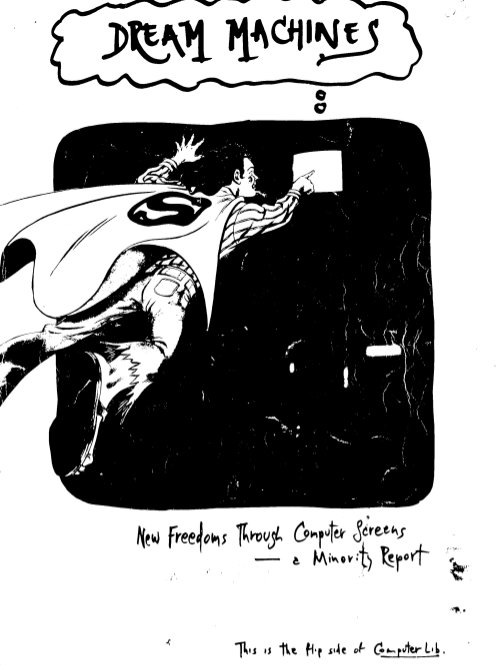Shen, Yu, Buford, Akon (eds.): Handbook of Peer-to-Peer Networking (2010)
Filed under book | Tags: · anonymity, computing, filesharing, internet, mobile technology, networks, p2p, privacy, trust, trusted computing

The handbook offers elaborate discussions on fundamentals of peer-to-peer computing models, networks and applications, and provides a comprehensive study on recent advancements, crucial design choices, open problems, and possible solution strategies. It is written by a team of leading international researchers and professionals
Peer-to-peer networking, a disruptive technology for large scale distributed applications, has gained widespread attention due to the successes of peer-to-peer (P2P) content sharing, media streaming, and telephony applications. In addition, a large range of new applications are under development or being proposed. The underlying architectures share features including decentralization, end system resources, autonomy, virtualization, and self-organization. These features constitute the P2P paradigm. Trends in information and network technology such as increased performance and deployment of broadband networking, wireless networking, and mobile devices are synergistic with and reinforce the capabilities of this P2P paradigm.
The Handbook of Peer-to-Peer Networking is dedicated to discussions on P2P networks and their applications, thus providing an exhaustive view of the state-of-the-art of the P2P networking field. Written by leading international experts, the volume contains fifty chapters dedicated to the following topics:
• Introduction to Peer-to-Peer Networking
• Unstructured P2P Overlay Architectures
• Structured P2P Overlay Architectures
• Search and Query Processing
• Incentive Mechanisms
• Trust, Anonymity, and Privacy
• Broadcast and Multicast Services
• Multimedia Content Delivery
• Mobile P2P
• Fault Tolerance in P2P Networks
• Measurement and P2P Traffic Characteristics
• Advanced P2P Computing and Networking
This comprehensive volume serves as an essential reference for researchers and professionals, The book is also suitable for computer science and engineering students at the advanced undergraduate level or higher who are familiar with networking, network protocol concepts, and basic ideas about algorithms.
Edited by Xuemin Shen, Heather Yu, John Buford, Mursalin Akon
Publisher Springer New York Dordrecht Heidelberg London
ISBN 978-0-387-09750-3
1421 pages
Ted Nelson: Computer Lib / Dream Machines (1974)
Filed under book | Tags: · computing, hardware, history of computing, history of technology, manifesto, media history, software, technology


“Computer Lib is a book by Ted Nelson, originally published in 1974 by Nelson himself, and packaged with Dream Machines, another book by Nelson. The whole publication (referred to as just “Computer Lib” by Nelson and others) had two front covers to indicate the “intertwingling” of the two books, and was republished with a foreword by Stewart Brand in 1987 by a division of Microsoft Press. The book, which is subtitled “You can and must understand computers NOW,” and which Nelson says in the 1987 edition was inspired by Brand’s Whole Earth Catalog, is a spirited manifesto that was inspiring to a generation of DIY computer-lovers. In his book Tools for Thought, Howard Rheingold calls Computer Lib “the best-selling underground manifesto of the microcomputer revolution.”
In Computer Lib, Nelson writes passionately about the need for people to understand computers deeply, more deeply than was generally promoted as “computer literacy,” which he considers a superficial kind of familiarity with particular hardware and software. His rallying cry “Down with Cybercrud” is against the centralization of computers such as that performed by IBM at the time, as well as against what he sees as the intentional untruths that “computer people” tell to non-computer people to keep them from understanding computers.
In Dream Machines, Nelson covers the flexible media potential of the computer, which was shockingly new at the time.” (from Wikipedia)
Publisher Hugo’s Book Service, 1974
132 pages
Reviews: d.h.f. (Byte Magazine, 1975), L.R. Shannon (New York Times, 1988), Vince Juliano (Connecticut Libraries, 1996).
Commentary: Noah Wardrip-Fruin (2003).
Book website
Author
Wikipedia
More information and reviews
PDF (15 MB, updated on 2021-7-9)
Comments (4)Fibreculture journal 19: Ubiquity (2011)
Filed under journal | Tags: · computing, pervasive computing, ubiquitous computing
Fibreculture Journal 19 deals with ubiquitous or pervasive computing, and with the recently emerged ambience of information. The issue details practices involving pervasive computing, both everyday practices and new art or dynamic architectural forms. Alongside these more practical concerns, the issue thinks through and with ubiquity. It takes ubiquity as something that has already arrived, something of immediate and increasing power. Simply put, ubiquity, by nature, is something with which we more often have to negotiate. Ubiquity’s ambiguous powers and possible futures also become key concerns. Finally, several articles consider the way that ubiquity might lead us to reconsider not only our past relationship to computing, but perhaps the very nature of computing and the human, vis a vis each other.
Articles include: Ulrik Ekman’s comprehensive introduction to the issues and ideas that move through ubiquity; Mette Ramsgard Thomsen and Karin Bech’s ‘Embedding response: self production as a model for an actuated architecture’; Anders Michelsen’s ‘ Pervasive Computing and Prosopopoietic Modelling: Notes on computed function and creative action’; Simon Penny’s ‘ Towards a Performative Aesthetics of Interactivity’; Christian Ulrik Andersen and Søren Pold’s ‘The Scripted Spaces of Urban Ubiquitous Computing: The experience, poetics, and politics of public scripted space’; Bo Kampmann Walther’s ‘Reflections on the Philosophy of Pervasive Gaming: With Special Emphasis on Rules, Gameplay, and Virtuality’; Matthew Fuller and Sónia Matos’ ‘Feral Computing: From Ubiquitous Calculation to Wild Interactions’; Malcolm McCullough’s ‘Toward Environmental Criticism’; Jonas Fritsch’s ‘Affective Experience in Interactive Environments’.
Issue edited by Ulrik Ekman
Publisher: Fibreculture Publications/The Open Humanities Press, Sydney, Australia, December 2011
ISSN: 1449 – 1443
PDF (PDF)
PDF (EPUB)
View online (HTML articles)

